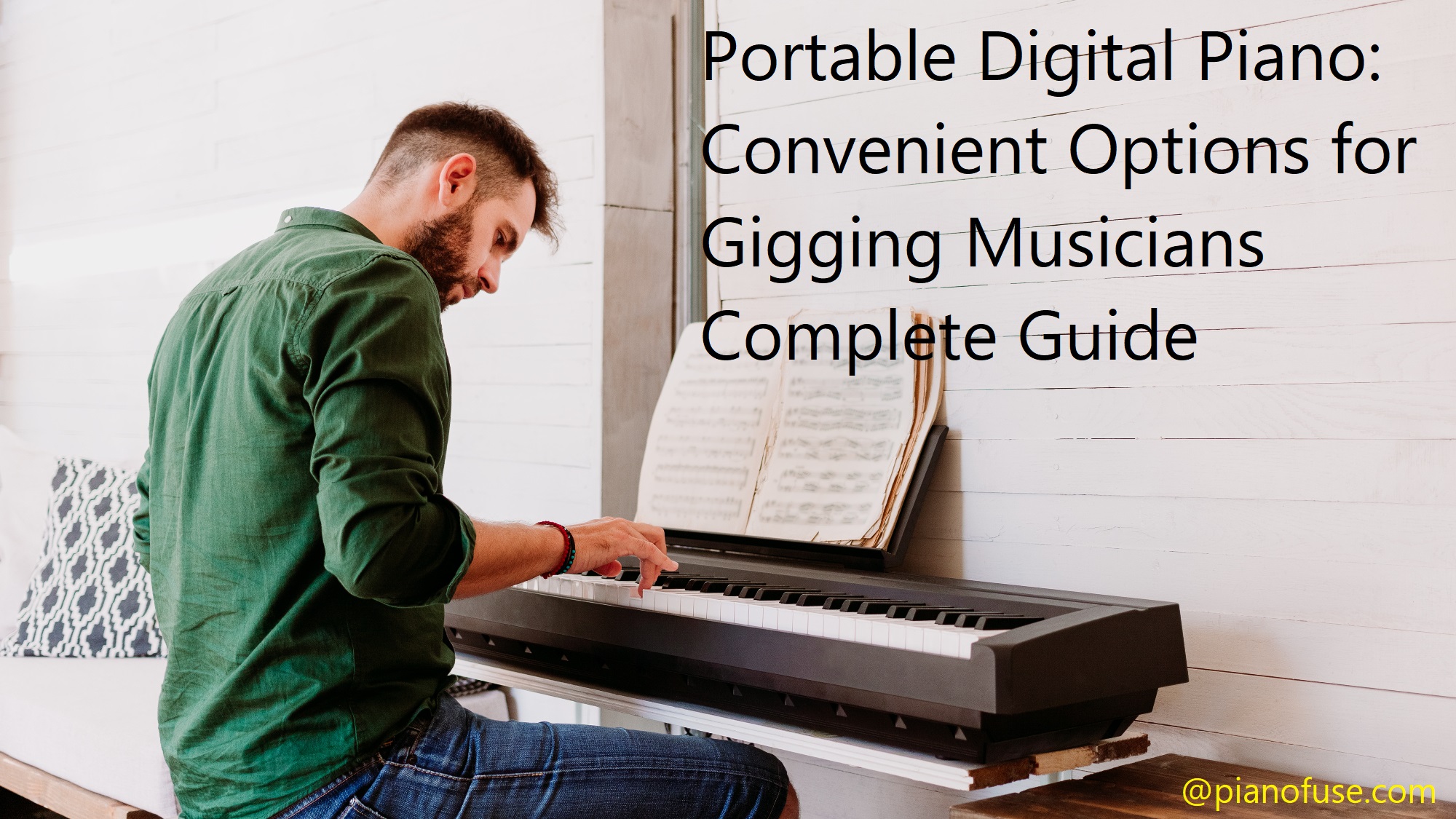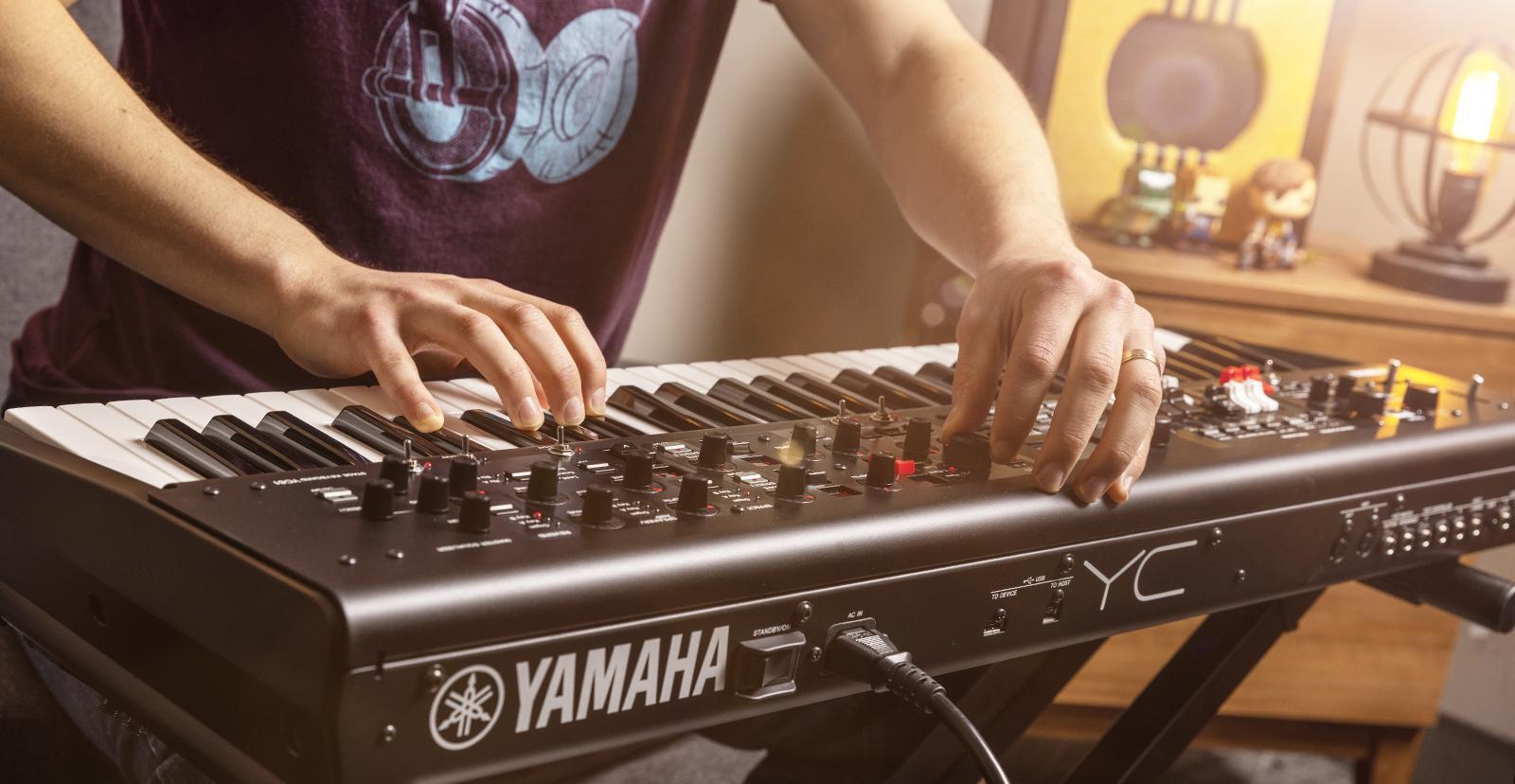Are you a gigging musician looking for a convenient and portable digital piano? You’ve come to the right place!
Here is an in-depth look at the different options available, from cheaper alternatives to higher-end products. With so many options to choose from, you can find the perfect digital piano for your creative needs.
This guide provides an overview of the best portable digital piano options for gigging musicians looking to take their music with them. A digital piano is a sophisticated musical instrument that combines the convenience and portability of modern technology with the traditional sounds and feel of an acoustic piano. It is ideal for practicing at home, recording, performing live, or taking on trips thanks to its small, lightweight design and professional features.
Our guide covers all aspects related to portable digital pianos, including sound quality, portability and compatibility considerations, as well as outlining some of our top picks currently available. We will first discuss the different types available and help you identify which one is right for your needs. We’ll also provide information on what to look for when making your choice so you can find a model that offers great playability while still fitting in your budget. Finally, we’ll review some frequently asked questions so you get a better understanding of these versatile instruments before making your final decision.
Explanation of the importance of having a portable digital piano for gigging musicians
For gigging musicians, having a portable digital piano is key to a successful performance. This type of piano offers the portability and convenience needed for travel to different venues and events.
There are several advantages of choosing a digital model over an acoustic one. Digital pianos are often much lighter in weight, making them easy to transport from one place to another. In addition, they are typically more budget-friendly than acoustic models, so they won’t break your bank.
Furthermore, some digital pianos offer several sound combinations and effects that you would not find with an analogue instrument. This allows you to create various sounds that suit different musical genres and styles. Additionally, having the right setlist “memorized” can be easier due to the user interface and display offered by digital pianos.
From recording songs to playback options and features throughout a show, having a portable digital piano can enhance all aspects of perfoming live music for gigging musicians.

Purpose of the guide
The purpose of this guide is to provide valuable information on the various features and types of portable digital pianos that are currently available on the market. The guide will address issues such as size, sound quality, playability, portability and transportability. We will also discuss cost considerations, honest reviews, and provide ratings that should be useful when making a purchase decision.
In addition to discussing individual portable digital pianos and their features in detail, this guide will also include tips on how musicians can use them to their greatest advantage. This can range from settings adjustments, volume levels, and effects that allow musicians to get the best sound out of their instruments when performing live shows or practicing at home. Furthermore, readers can expect to find easy-to-understand explanations of the relevant technology and helpful advice for getting the most out of their equipment.
Factors to Consider When Choosing a Portable Digital Piano
Once you’ve decided that a portable digital piano is the best option for your needs, there are several factors to consider when choosing the right instrument. These may include size, weight, sound quality, features, range of notes and octaves, and voices or onboard backing tracks. Additionally, many portable digital pianos offer portability features such as speakers and the ability to hook it up to an amplifier or PA system. This can be extremely helpful if you’re a gigging musician who changes venues regularly.
When selecting a digital piano, consider how much space is available in your practice or performance venue as well as how much weight you are willing to transport. The size of each portable digital piano will vary depending on its keyboard action (weighted hammer action vs unweighted synth-action) and the number of onboard sounds. Weighted hammer actions tend to take up more space and add extra pounds because of their heavier components, while unweighted synth-action keyboards generally require less space but provide less real-life feel when playing.
Once you’ve decided on size and weight requirements for your portable digital piano, consider sound quality; this will primarily depend on the built-in tone generator used in a particular model. Many digital pianos come with hundreds of onboard sounds ranging from grand pianos to strings to percussion instruments such as drums or cymbals — the more voices a keyboard has at its disposal the better it will sound overall. Additionally, many models offer varying amounts of octaves (the range between two notes) which can greatly affect both practical playing applications (e.g., bass frequencies) as well as listening pleasure (e.g., extended dynamic range).
Weight and Portability
Weight and portability are two of the most important factors to consider when looking for a digital piano. Digital pianos are generally lighter and more portable than traditional acoustic pianos, making them perfect for gigging musicians who need a lot of flexibility in their playing environment.
The weight of digital piano will vary depending on the model, but heavier models can range from 70 to 105 lbs. This is significantly lighter than the average acoustic upright or grand piano, making them perfect for transportable use. Even the heaviest options can easily be carried by two people or with a simple rolling case.
When transporting a digital piano, you want to make sure that it is fully protected from bumps and scratches. Investing in a quality carrying bag or hardshell case will ensure that your instrument stays safe during transport, so be sure to research which material will work best for your specific needs. Padded bags are usually more affordable and are great for short trips, while hard cases offer maximum protection but come at a higher price point.
Size and Key Action
When it comes to size and key action, gigging musicians must ensure that their digital piano is compact enough to fit in the car or on the bus and easy to set up. Some models come with a folding stand that makes transport as simple as possible. Additionally, the key action should be realistic and comfortable, offering an overabundance of potential for expression when playing at gigs or practice sessions.
The number of keys offered varies according to the size of the keyboard, which can range from a full-size 88-key model down to a mini 25-key option. Most importantly they should be fully weighted in order for musicians to have more accurate control over dynamics when playing live as opposed to a keyboard with light touch keys which may become more challenging as quantity increases. Different models may also have different features such as velocity sensitivity – factors such as this are important when selecting the best portable digital piano for you.
Sound Quality and Polyphony
When it comes to sound quality and polyphony on a portable digital piano, both of these factors can have a big impact on the quality and enjoyment of your playing experience. Sound quality is based on the instrument’s sampling engine and its ability to accurately reproduce an acoustic piano’s natural sound. Polyphony refers to the number of tones that can be sounded simultaneously, allowing you to play chords with several notes at once.
A good sound engine should reproduce true dynamic response, allowing you feel what’s known as “action sensitivity” when playing. This means that the harder you press a key, the louder or brighter the tone will be; conversely, softer touches should produce quieter or darker tones. When evaluating tonal range this means looking for pianos with high-quality acoustic samples that get bright when pressed hard but don’t break up at higher velocities.
Polyphony is also an important factor in determining the quality of your playing experience. The level of polyphony decides how many notes can be heard at once – note resolution decides how closely those notes match each other timbral wise (how realistic they are). Generally speaking, portable digital pianos offer fewer available levels of polyphony than large stage instruments, so it is important to consider what sounds you envisioning when selecting one for gigs or recordings sessions – if nuanced chord playing or complex multi-timbral accompaniments are required then it may be worth investing in an instrument with more robust features in this area.
Connectivity and Compatibility
Digital pianos come with a range of connectivity options that allow you to hook up your instrument to other devices. This can make it easier to compose, practice and exchange data with other digital devices. When selecting a digital piano, make sure you check the various ports and cords available in order to ensure its compatibility with your computer or recording equipment.
Most full-sized portable digital pianos offer a variety of connectivity options. These can include an audio output for connecting music players or recording systems, MIDI ports for connecting to computers, and even USB ports for plugging into laptops or tablets. Other common features include Bluetooth connectivity and external memory storage slots that allow you to save compositions onto a memory card.
When shopping around for a digital piano, it is important to ensure that its connectivity options are compatible with your setup. Not all port types are universal, so be sure to double-check the instrument’s specifications before making a purchase. In addition, some models may require additional cables or adapters in order to access their full range of capabilities.
Conclusion
For gigging musicians who need a reliable and portable digital piano, the options discussed above all have unique advantages. Depending on the size and design you are looking for, you can choose an all-in-one model which includes separate speakers, or a more streamlined model which requires external amplification. For larger venues, stage pianos provide a range of sounds and features to help you create the perfect soundscape or composition.
Finally, it is important to hone your skills as a performer no matter which instrument you choose. Just like any other instrument or piece of equipment, taking the time to familiarize yourself with each of these fascinating instruments will make choosing the right one for your needs easier. With so many options available when it comes to selecting a portable digital piano, there truly is something for everyone!
FAQ’S
What is the best digital piano for experienced players?
Some of the best digital pianos for experienced players include the Yamaha Clavinova, Kawai CA series, and Roland LX/HP series.
What is a good keyboard for gigging?
A good keyboard for gigging should be lightweight, portable, and have high-quality sounds and features. Some good options include the Yamaha CP88, Roland RD-88, and Korg SV-2.
Which digital piano is most like a real piano?
Some of the most realistic digital pianos include the Yamaha AvantGrand series, Kawai Novus series, and Roland V-Piano.
Which is the best keyboard for stage performance?
The best keyboard for stage performance depends on the player’s specific needs and preferences, but some popular options include the Nord Stage, Yamaha Montage, and Korg Kronos.
What piano do concerts use?
Concerts often use high-end acoustic pianos such as Steinway, Yamaha, or Bösendorfer.
What piano do concert pianists play?
Concert pianists typically play on high-end acoustic pianos such as Steinway, Bösendorfer, Fazioli, or Yamaha.
What digital piano do professionals use?
Professional musicians often use high-end digital pianos such as the Yamaha AvantGrand series, Roland V-Piano, and Kawai Novus series.
Which is the best portable digital piano?
Some of the best portable digital pianos include the Yamaha P-125, Roland FP-30, and Kawai ES110.
Which digital piano is most similar to acoustic?
Digital pianos that use hybrid technology, such as the Yamaha AvantGrand series and Kawai Novus series, are the most similar to acoustic pianos in terms of touch and sound.
What is the difference between a digital piano and a digital stage piano?
A digital piano is designed to replicate the sound and feel of an acoustic piano, while a digital stage piano typically has a wider variety of sounds and features that are designed for live performance. Digital stage pianos are often more portable and have more connectivity options for use with other instruments and sound systems.
See Also:
- Best acoustic piano 2023
- Best digital piano for classical pianists 2023
- Best digital piano for under 1000 2023
- Best digital piano headphones 2023
- Best digital piano under 500 2023




